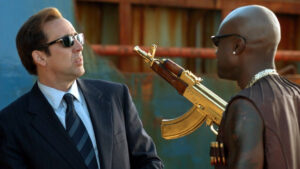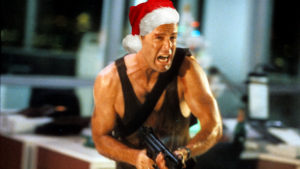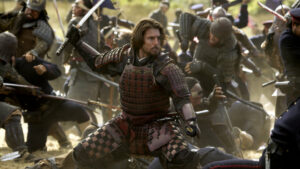It’s hard to talk about the best horror movies ever made without considering why the genre is so popular to begin with. A study once published in the Journal of Media Psychology indicated that there are a number of reasons people either love or hate a good horror, ranging from the adrenaline our brain feels when it experiences something threatening (and subsequently leaps into fight-or-flight mode), to scary stories bringing people closer together – being vulnerable together creates a sense of intimacy, which is why horrors are almost always good date films.
Although perhaps the most interesting reason we seek out the best horror films to give us a good scare, is that the brain experiences a sense of pleasure when it realises that the threat in front of it isn’t actually real. Talking to Bustle, Dr Katherine Brownlowe, an assistant professor in the departments of neurology and psychiatry at the Ohio State University College of Medicine, said that, “the experience of your brain calming itself down after watching a scary movie is actually neuro-chemically very pleasurable… because the dopamine release related to the ‘rest-and-digest brain response causes an increased sense of well-being.”
Watching the best horror movies can essentially challenge our beliefs about risk, which according to Brownlowe can “reset the thermostat” for people so that these films can actually be a prepping exercise to help us deal with intimidating situations in our lives. For many, it’s easier to take on mentally daunting tasks after they’ve finished binge-watching some of the best horror movies they can find.
Related Articles :
- Best Movies on Netflix Australia
- Best Movies On Amazon Prime Australia
- Best Shows On Stan To Stream
- Best Shows On Netflix Australia Right Now
So in a way, this collection of 40 of the best horror movies of all time could be doing you more of a solid than you know. And for the horror aficionados out there, note that this list is completely unranked because when it comes to the best horror films, they’re all worth a watch.
Our 40 Favourite Horror Films Of All Time
The Shining (1980)
While Stanley Kubrick’s unimpeachable 1980s classic may be light on gore and trendy jump scares, The Shining is forever etched into cinema history for a number of reasons. Firstly, Kubrick’s studious direction and John Alcott’s cinematography is a masterclass of cause and effect, highlighting how the tools of the trade can be used to heighten the film’s caked-in sense of dread and truly explore its desolate setting – the foreboding Overlook Hotel. Secondly – and perhaps most importantly – is an intelligent, unhinged performance by lead Jack Nicholson, quiet and perfectly paced as he pulls viewers into Jack Torrance’s aggressive descent to psychopathy and violence. Steven King, who penned the film’s highly acclaimed source material, famously disapproved of Kubrick’s interpretation for a long time, even going so far as to call it “cold and disappointingly loveless” – that’s kind of the point, dude.
Trivia: Kubrick may be one of cinema’s greatest heroes, but he’s also a bit of an asshole. According to Nicholson, the auteur was nothing but complimentary towards the legendary actor, but was a “different director” when it came to co-star Shelley Duvall, who plays Wendy Torrance in the film. Kubrick forced her to reshoot the stairwell scene – where she has to swing a baseball bat constantly at her insane on-screen husband – an exhausting 127 times. The shaking hands and puffy eyes on-screen are reportedly the results of genuine crying, where Duvall would ball her eyes out for up to 12 hours a day and begin to lose her hair due to the stress. To make matters worse, Kubrick would constantly tell the cast and crew not to sympathise with Duvall, while keeping her isolated to invoke genuine fear during scenes.
Hostel (2005)

Although Cabin Fever established Eli Roth’s penchant for mainstream sadism and gore-for-the-masses schlock, it was 2005’s Hostel that truly cemented the Tarantino protégé as a distinct voice for modern horror. Not only did the brutal film become a reference point for precarious Eastern European backpacking scenarios – kind of like a violent counterpoint to Eurotrip – but the story, of locals who ‘buy’ tourists to enact murderous fantasies, helped re-define the ‘torture porn’ category once resurrected from obscurity by a withering Saw franchise.
Trivia: In an interview with Dread Central, Eli Roth explained that Hostel was actually inspired by a website shown to him by Ain’t It Cool News founder Harry Knowles. Although no proof of the website exists – at least anymore – Roth claims it was a service whereby anyone could go to Thailand and, for $10,000, walk into a room and shoot somebody in the head – consensually. Apparently, the site explained that the victim was a volunteer who signed up because they were already at death’s door, with part of the money going to their family. Much like the service that underpins Hostel’s twisted narrative, “it was to give you the thrill of taking another human life.”
28 Days Later (2002)
When Trainspotting mastermind Danny Boyle wanted to feed the constantly growing appetite for post-apocalyptic horror, he chose to go hard with 28 Days Later. Although the sequel was just as exciting, the desolation and dread of the first makes for what is easily one of the greatest zombie flicks to date. Cillian Murphy’s Jim waking up to a vanished, inhospitable London overrun by unrelenting ‘infected’ was terrifying enough, but it’s the desperate journey across an empty British countryside that helped make this film god-tier when it comes to world-building. If that wasn’t enough, the sheer veracity of human brutality is picked apart when things really come to a head towards the end of the film.
Trivia: One of the most notable things about 28 Days Later is just how spectacularly aggressive the ‘zombies’ are, moving away from the slow and escapable undead of tradition. This was actually thanks to Boyle’s purposeful casting of retired athletes. Reportedly, Boyle assembled his army of the undead by going to an agency which employs athletes after they finish their career, usually to open supermarkets and turn tumbles – and, you know, dress up as blood-lusting, rage-infected zombies.
Candyman (1992)

Mostly praised for its racial subtext, at a time when the best horror movies weren’t actually brimming with such issues, Candyman cut through the early 90s noise with an intelligent script and an inventive conceit. Bolstered by Tony Todd (who played the titular killer) and his eternally chilling vocal performance, as well as a suitably creepy, histrionic score from composer Philip Glass, the sound design alone was enough to make it one of the creepiest films since Children of the Corn. The story, of an urban legend bogeyman who appears when you say his name five times in the mirror – often to “split you from your groin to your gullet” with his bloody hook-hand – terrorised the notorious Cabrini-Green housing project in Chicago, sketching a personification of confected fear onto a community that suffers from the same real-life prejudice.
Trivia: In the film, Candyman’s backstory tells of a black man who was murdered for falling in love with a white woman, sickeningly smeared with honey and stung to death by killer bees. As such, the ghost of Candyman can control the very thing that killed him; over 200,000 real honeybees were used during the shooting. Although crew members donned protective suits while on set, that didn’t stop many from being stung all throughout production. Tony Todd actually turned this into a hustle, negotiating a bonus of $1,000 for every sting he took. He was stung a total of 23 times.
The Mist (2007)
Not every film based on a Stephen King novel bangs, but 2007’s The Mist is a fine example of what can happen when an imaginative director gets liberal with the legendary author’s work. Frank Darabont, who was heavily involved in the early stages of The Walking Dead (before an acrimonious departure from AMC’s cash cow halfway through the second season) and of course is best known for The Shawshank Redemption, earned swift praise for taking King’s ending and adding a cruel twist – a reference point for how you’re supposed to end such a bleak Lovecraftian monster movie. It was enough that The Mist remains one of few of Stephen King more horror-leaning adaptations that the author approves of.
Trivia: Although critics bemoaned the overreliance on CGI, and despite the film’s high entertainment value, The Mist’s legacy really is all about the ending. Several articles have been written on why it’s one of the best horror movies decisions, which validates just how long Darabont spent meticulously planning how it would unfold. The director was sitting on the idea for a good 20 years before getting the chance to bring it to life, having such an impact that he even got King wishing he had thought of it when writing the 1980 novella.
The Hills Have Eyes (2006)

The large majority of critics may have turned their noses at Alexandre Aja’s The Hills Have Eyes, a polished remake of Wes Craven’s 1972 original, but the rather viscous reimagining is still one of the 2000s best horror movies. Much like Craven’s piece, the film uses the Nevada desert to channel a natural, sinking feeling of helpless isolation – a background to the relentless terror and gore unleashed upon a family by a band of mutant, hill-dwelling cannibals. For the 2006 remake, Aja conceived of the mutants as inbred descendants of miners who refused to abandon their homes in the face of relentless nuclear testing, adding the very real paranoia surrounding radiation as an extra thick layer of fright on top of what was already an exceptionally depraved concept. It may not be the most skilfully told story on this list, but it’s nothing if not entertaining.
Trivia: Wes Craven drew inspiration for The Hills Have Eyes from the real-life tale of Sawney Bean, Scotland’s most infamous cannibal. According to legend, he lived with his wife and a clan of almost 50 in the bowels of Bennane cave in the country’s south-west, where desperation led him to a life of kidnapping, murdering and eventually cannibalising hapless travellers on nearby remote roads. He and his small army of thieves were quite successful until they bit off more than they could chew, picking a fight with a skilled swordsman who fought them off and exposed them to the Chief Magistrate of Glasgow, but not before Bean murdered the man’s wife. After that, it was all over for the clan, as King James I rocked up with hundreds of men to stage what then was the biggest manhunt the country had ever seen. Bean and his clan were promptly sentenced to death, while the women were burned alive.
Hereditary (2018)
34-year-old director Ari Aster sure made an impact when he seemingly screamed out of nowhere with 2018’s divisive Hereditary and turned in one of cinema’s best horror movies. At its core, the cultish supernatural horror is a family drama, artfully building a sense of palpable anguish before exploding with some of the most frightening scenes in modern cinema. Like all the best horror movies, Hereditary cleverly used a very real, gut-wrenching fear and a sickening slice of shocking body horror to kick things off. From that very pivotal, throat-clutching scene, Aster’s direction benefits from sympathetic, claustrophobic performances from the film’s solid on-screen family – Toni Collette, Gabriel Byrne, Alex Wolff, and Milly Shapiro – as well as a particularly wicked turn by Ann Dowd. Some may have found the climax a bit too ridiculous, but there’s little doubt Aster achieved the suffocating feeling he was obviously aiming for. It may be a slow-burn, but nowhere near as punishingly slow as Blair Witch Project.
Trivia: I sat down with Aster, Wolff, and Shapiro when the film premiered at SXSW 2018 as part of a round-table interview. Given Wolff’s obvious commitment to the absolute trauma of his character, I asked him how the role affected him behind the scenes.
“There’s no way you can do the things that I do in this movie, go through the things that I go through, without going home and feeling a little sick to your stomach,” he told me. “I didn’t feel like when [Aster] said ‘cut’, things were over. I felt pretty shaken to the core, pretty much the entire way through.”
Audition (1999)

Japanese auteur Takashi Miike is well known for his wide-ranging command over numerous genres, but Audition remains one of his most referenced works simply because it’s a patchwork of his best tendencies. For much of Audition, a first-time viewer would be forgiven for thinking it was more drama than horror, but by the film’s close, there’s no mistaking this for anything but a visceral gut-punch of revenge porn and graphic violence. The film is almost narrow-minded in its attempt to aggressively hammer in wider messages of how society can shape someone from meek to monster through mistreatment and degradation.
Trivia: A film as sick and bizarre as Audition would usually be locked away in a narrow niche, but Miike’s piece has been widely praised by some big names in the past. Most notable is Quentin Tarantino who reportedly described the film as a “true masterpiece if ever there was one.” Rob Zombie has also been quoted implying that Audition is the most creepy and unsettling of any horror he has ever seen.
It Follows (2015)
No one could have expected It Follows to go on to become one of the best horror movies of all time. Director David Robert Mitchell emerged from relative obscurity with the 2014 hit, with only short film Virgin and coming-of-age flick The Myth of the American Sleepover under his belt. Still, with an interesting premise and a brilliant sense of atmosphere, the director managed to turn a story that is essentially about a sexually transmitted curse into a scintillating John Carpenter-esque nightmare, where slow-moving apparitions felt like they were charging at you, despite moving at a snail’s pace. The intimidating, inescapable vibe of the whole film will be a reference point for the best scary movies for years to come.
Trivia: It Follows felt like a nightmare by design. And that’s because it was inspired by one. As a child, Mitchell would regularly dream of being stalked by a slow-moving malevolent force, taking the form of different people. Couple that with a love of horror films like The Night of the Living, and you’ve got a potent recipe for one of the best horror movies of all time.
Sinister (2012)
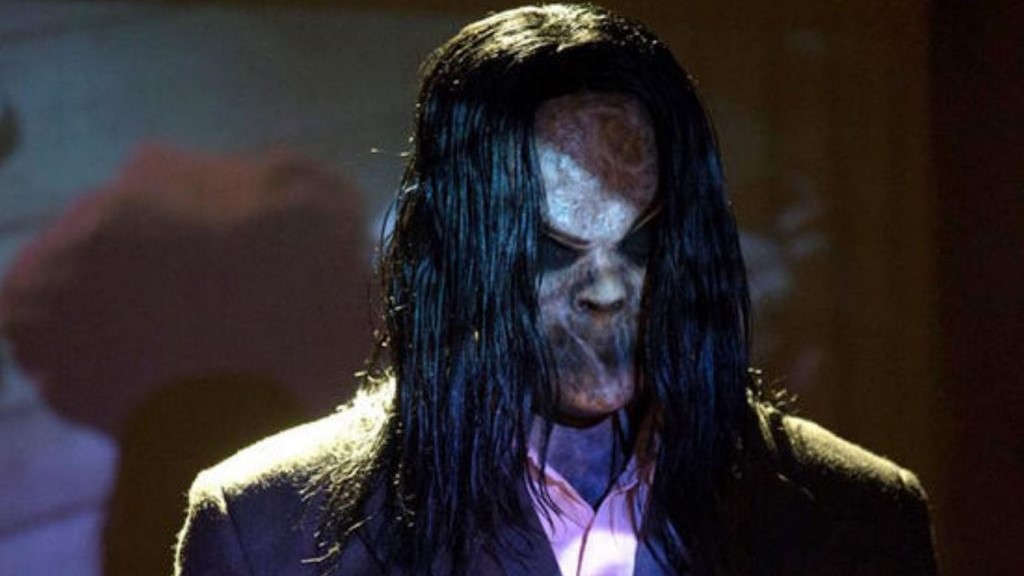
It’s official. Scott Derrickson’s Ethan Hawke-starring Sinister is, according to science, the scariest movie ever made. The 2020 study wasn’t bulletproof and was all in the name of fun, but it says a lot that this immaculately built 2012 supernatural horror can frighten the hell out of people all these years later. The story, about a bitter true-crime writer who finds a bunch of genuinely disturbing Super 8 films in the attic of his new house, may have unfolded with one too many cliché jump scares, but nothing can fault its atmosphere. Quiet, unnerving and stressful, the gut-feeling Derrickson and cinematographer Christopher Norr built around Hawke’s nuanced performance is amongst the most masterful in a modern psychological horror movie.
Trivia: A big reason why Sinister works so well has to do with how many measures the cast and crew took to maintain authenticity throughout filming. The zealousness for credibility was downright dangerous at times, most of all during the scene where a family is hung from a tree. Because of a negligent stunt coordinator – who was subsequently fired – one of the actors was genuinely hung and almost died. Hawke was similarly obsessed with giving a genuine performance, with the actor not watching any of the Super 8 snuff films prior to filming; his genuine reaction to viewing the macabre tapes was captured and used in the final cut.
Don’t Look Now (1973)
Don’t Look Now is a spooky, grief-stricken fever dream that, in 1973, proved that the best horror movies of all time are more effective when they magnify deep-seated fears already milling in the back of a viewer’s mind, rather than attempt to present new ones through jump scares and confected monsters. What director Nicholas Roeg did to atone for the rather crude and deliberately disorientating structure was heighten the imagined feeling of losing a child and having your grief weaponised against you. With strong, shaken performances by Donald Sutherland and Julie Christie, Roeg was able to make a bed of pure psychological distress. And when done right, that’s often what can cut through any amount of gore and ghosts to present a singular horror viewer is unlikely to ever forget (though having one of the most infamous sex scenes in cinema helps the memorability factor as well).
Trivia: The movie is constantly referenced as having one of the more explicit softcore sex scenes in a feature film. It was so out there at the time that the scene was completely removed by censors when it was released in Ireland, and Roeg had to trim roughly nine frames to avoid an X-rating in America.
Jaws (1975)

Is Jaws a horror movie? It’s been a useless debate in cinema for years, flung between bored critics and film buffs whenever lists like these come up. Of course, if Jaws qualifies as a horror movie, then not having it appear on a list of the best horror movies of all time is downright criminal. Even outside of the genre, Jaws is an untouchable piece of cinema and one which has resulted in a real-life fear so deeply entrenched and indelible that Stephen Spielberg should be held in contempt. The legendary director certainly hasn’t done sharks any favours, turning their image into that of the blood-lusting beast, stalking and killing with intent. Any movie that can scare people so much that they have a life-long fear of water is a horror genre classic in my books.
Trivia: Tootsie director Dick Richards was originally tapped to be the director for Jaws before he was fired for being an absolute flog who evidently didn’t even know what a shark was. Apparently, he irritated the producers with his treatment for the film, which referred to the shark as a whale, and attempted to downplay the horror at every turn. No one wanted a director that didn’t know the difference between the two distinct sea creatures. Besides, it’s now impossible to imagine Jaws in the hands of anyone else but Spielberg.
Halloween (1978)
Michael Myers may not be the fastest serial killer to stalk a town, but the iconic slow-moving psycho killer from Halloween is without a doubt one of the most bone-chilling figures in horror (and that’s even when considering A Nightmare on Elm Street or Friday the 13th). A simple mask and a penchant for gratuitous stabbing is all it took to turn this certified maniac into a visceral presence in our nightmares. While the franchise he spawned is inconsistent, there are some true gems when mining the long history of John Carpenter’s legacy. Rob Zombie’s first remake, giving Myers an origin story, was respectable enough, but it’s the original that stands out. From the iconic score, where Carpenter turns a twinkling piano riff into a bone-chilling hellscape of frantic keys, to the paranoia-inducing direction, right to Jamie Lee Curtis’ immortal role as scream-queen Laurie Strode – perfection.
Trivia: Halloween was shot on a budget of $300,000, independent by every measure. Roughly half of that figure was taken up entirely by procuring special Panavision cameras so that the film would have that rich, atmospheric and anamorphic 2.35:1 scope, sticking true to Carpenter’s insistence that shooting widescreen is the best technique in cinema, and for this classic slasher film.
The Sixth Sense (1999)

Despite a respectable comeback in recent years, M. Night Shyamalan is still a usual punch-line for jokes about scripts written entirely in service of their twist ending. Sure, the common indulgence can feel cheap at times, but what Shyamalan did with 1999’s The Sixth Sense – still his masterwork – and how he structured the film is undeniable. The story follows Haley Joel Osment as a young medium (AKA, the “I see dead people kid”) with extra-sensory perception, and the child psychologist (Bruce Willis) assigned to help him adjust. For a while, it starts to look like 1993’s Heart & Souls in a darker, more horrifying skin, but Shyamalan’s now-notorious tendency for subverting expectations is steady and focused enough to keep it cohesive while working towards the narrative curve-ball. It’s the scariest Disney film ever made.
Trivia: That line above about it being a Disney film isn’t a bad joke. The Sixth Sense is a Disney film. In fact, the script was purchased by Walt Disney Studios’ then-president David Vogel for roughly US$2.5 million. The problem was that Vogel, despite making a smart business decision given The Sixth Sense raked a worldwide gross of US$672.8 million against a US$40 million budget, didn’t consult his superiors before making the purchase. It has long been rumoured that his subsequent firing was a direct result of the deal.
The Texas Chainsaw Massacre (2003)
Perversely sickening as Tobe Hooper’s original is, it’s actually the 2003 remake of The Texas Chainsaw Massacre that gets over as the bizarre slasher franchise’s most competent offering. Director Marcus Nispel stayed true to the cynical backwoods story of the first, following Hooper’s fundamental beats, from a group of ill-fated teens picking up a hitchhiker, straight through to them getting torn to pieces by a cunning family of cannibalistic inbreds – the disfigured muscle of the clan being infamous, chainsaw-wielding Leatherface. So disturbing was the very idea of The Texas Chainsaw Massacre that the remake’s commitment to a more muscular tone feels more true to the general atmosphere of miasmic dread. Horror fans could never get enough.
Trivia: Although Leatherface is a highly exaggerated caricature of a number of killers, one of the original’s biggest inspirations was just as reprehensibly violent towards his victims. That would be Ed Gein, a serial killer and grave robber who would regularly exhume corpses and decorate his home with the body parts of his victims. When he was eventually detained, some of the things found in Gein’s Wisconsin house included several chairs upholstered in human skin, a belt and corset of severed nipples, and bowls made from human skulls. Notably, Gein’s close relationship with his mother was the inspiration behind Robert Bloch’s 1959 novel, Psycho, and Buffalo Bill from The Silence of the Lambs. You simply can’t have a discussion on the best horror movies without mentioning this one.
Rosemary’s Baby (1968)

This is the film that really established Roman Polanski as one of the most anticipated auteurs of his era. This was long before the director’s crimes when the brilliance of Rosemary’s Baby echoed throughout every corner of the film industry. Why? It’s the direction that truly turned this macabre film from a busy, gratuitous cult flick to one of the best horror movies of all time, establishing a distinctive tone entirely separate from its source material. By teasing out the psychological aspects of Ira Levin’s novel, Polanski was able to better explore the dynamic between appearances and beneath-the-surface evil, using a satanic cult to usher in a newfound pop culture obsession with the cosmic battle between good and evil forces.
Trivia: Mia Farrow’s role as Rosemary Woodhouse came at a great personal cost to the iconic actor. At the time, she was married to Frank Sinatra and when Farrow received the script for Rosemary’s Baby, her husband was asked to read it. “I can’t see you in it,” he reportedly told her. Farrow went ahead and did the film anyway. As such, a shooting schedule clash took Farrow away from starring in Sinatra’s neo-noir crime film The Detective, much to her husband’s dismay. Rather childishly, Sinatra tried to force Farrow to choose between the film or their marriage. The film won, and it created such a rift between the two that they didn’t speak for several years following the divorce.
The Conjuring (2013)
When James Wan created the gratuitous Saw franchise, not many expected the Australian director to go on and completely redefine the supernatural horror category with muscular haunting The Conjuring. Yet with a strong script, inspired by a genuinely terrifying true story, and an even stronger cast, Wan was able to craft a singular frisson of fear that spliced the best parts of The Amityville Horror and The Exorcist to prove that insatiable demonic spirits are far more frightening, and threatening, than plain old ghosts. Unfortunately, he hasn’t been able to top the original since expanding the film into a bloated franchise, with only Annabelle: Creation and Conjuring 2 (and the latest third film) having their moments.
Trivia: The film is based on the case of the Perron family, who moved into the real-life ‘Conjuring house’ in Rhode Island after eight generations of families lived and died on the grounds. Many of the deaths spoke to an incredibly disturbing plot of land, spanning two documented suicides, the rape and murder of an 11-year-old girl, two drownings, poisoning, and even the death of four men via freezing.
The Devil’s Rejects (2005)

What Rob Zombie was trying to do with 2003’s House of 1000 Corpses was perhaps a bit too disorientating, building up an atmosphere of carnivalesque horror and indulging in imagery like Rainn Wilson (Dwight from The Office US) decapitated and sewn together like a merman. Sure; Rob Zombie is nothing if not brutal. But the film was still quite messy and unfocused. Flash forward two years and the musician-director dropped the sequel, The Devil’s Rejects: focused, just as brutal, and surprisingly sympathetic. It takes great skill to flesh evil, sociopathic acts out in a way that doesn’t feel gratuitous, but Zombie’s treatment of the deranged Firefly family, and eccentric performances by Sid Haig, William Moseley, and Sheri Moon Zombie, kept the film feeling grounded in something real and terrifying. You keep having to remind yourself that it’s only a movie.
Trivia: Although Rob Zombie’s films are generally only appealing to dedicated horror aficionados, he sure had a few big names banging down his door for star roles. Pro-wrestling maverick Chris Jericho was one, auditioning for the role of the bounty hunter Rondo and subsequently getting rejected because he was “too good looking.” The role went to the legendary Danny Trejo instead. Also considered for a job was the late, great James Avery (also known as Uncle Phil), but for reasons unknown, he didn’t land the part.
Scream (1996)
It’s heady praise that a film originally set out to spoof slasher flicks ends up being considered one of the best scary movies of all time. Not that anyone doubted director Wes Craven, given the reputation he built with classic characters like Freddie Kruger, prior to Ghostface’s reign of terror in 1996. Scream is one of the few comedy horror films that actually lands its semi-serious tone, even when it includes something as ridiculous as Fonzie being gutted with a pair of scissors. The three subsequent films were all entertaining enough, but there was no outpacing the original when it came to charm.
Trivia: While filming the cold open for her role as Casey Becker, Drew Barrymore developed a habit of accidentally dialling 911 numerous times. Prop master JP Jones had forgotten to unplug the landline she was using, so police dispatch thought they were being pranked when they heard the actor screaming, hanging up, calling back, and then screaming some more. In the 2011 documentary Still Screaming, Jones recalls fielding calls from a very confused dispatch wondering what the hell was going on.
Paranormal Activity (2007)

There is a fundamental idea with a good ol’ ghost story that few directors seem to understand. A viewer’s imagination can be far more frightening than anything that actually unfolds on screen. This is why minimalism works when it comes to supernatural horror, prodding the audience enough that they end up terrorising themselves far more than any jump scare ever could. It’s that edge-of-your-seat tension that the original Paranormal Activity tempts so well, slowly but surely establishing a pattern of repetition whereby a static night-vision webcam picks up escalating ghostly activity. The easy plot of a suburban haunting, shown entirely through security cameras, forced viewers to take every small bump and overarching shadow with overbearing anticipation, really indulging in the singular self-torture that’s been conditioned through years and years of well-known ghost clichés. Unfortunately, the trick only really worked once, and the Paranormal Activity franchise was one of rapidly diminishing returns.
Trivia: There’s little wonder as to why Paramount demanded more from the franchise. Paranormal Activity’s production costs amounted to just US$15,000, while post-production set the producers back US$215,000. 230K may seem like a decent chunk of money for such a low-budget film, but when the worldwide box office pulls in US$193.4 million, it’s a pretty solid ROI (if not the highest ever).
Final Destination 3 (2006)
Watching a death scene unfold in a Final Destination movie is a bit like playing Mouse Trap. The board game was only exciting when you could watch how each element leaned into one another, like a cascade of dominos ending in a particularly grizzly end. In Final Destination – pick any one – that end was a series of split heads, laser-burned faces, gnarly gymnast accidents, and death-by-log woes, so there was plenty of mayhem to go around. Though it’s the third instalment, from James Wong, that peels ahead of the rest simply because it leans away from anything serious and dives headfirst into sheer carnage. It certainly helps the horror of it all when the opening premonition scene taps into a very real fear – who hasn’t been paranoid of a rollercoaster ride going horribly wrong?
Trivia: This little nugget is less about this specific horror film and more about the franchise in general. It was originally conceived as an episode of The X-Files titled ‘Flight 180.’ Given Wong had written some of the standout X Files episodes throughout the show (“Ice” and “Home” particularly), there’s no surprise this one snowballed into its own expansive movie franchise.
Drag Me To Hell (2009)

Despite its aggressive name, Sam Raimi’s Drag Me To Hell is a lot more fun and campy than you’d think. Much like the legendary director’s Evil Dead series, the playful touch of this accursed horror reiterated just how unique Raimi’s tone can be when he’s given the right material. Keep in mind, Drag Me To Hell was released only two years after Raimi had completed a successful Spider-Man trilogy, and it was obvious that he wanted to go extra hard for his return to comedy horror.
The result is a quick-witted, flamboyant story about a loan officer cursed for her brutality towards an elderly lady. It’s an acid-tongued attack at what those with a lack of compassion for others ultimately deserve, and even though Raimi’s caricature of a gypsy may have, hypocritically, lacked the same empathy he was preaching, it’s hard not to feel the script’s wrath.
Trivia: As perhaps a reminder of how many great scripts are out there bubbling behind the scenes, the story of Drag Me To Hell was actually written shortly after Sam and Ivan Raimi finished filming Army of Darkness in 1992. That’s a long time to wait to release one of the best horror movies of all time.
Arachnophobia (1990)
If Jaws made viewers scared to jump in the water come summer, Arachnophobia at least made everyone double-check just about everything to make sure no violently deadly spiders were waiting to kill them. The 1990 Disney film, helmed by Frank Marshall and led by Jeff Daniels and John Goodman, was just about the most terrifying a PG-13 rated horror movie could ever get. Marshall had it relatively easy; no matter what he did, the movie was always going to go down as one of the scariest, simply because it was dealing with viciously deadly spiders, often shot in a way that doubles down on the fear-inducing speed and made their fangs seem almost vampirish. The filmmaker didn’t depend on the idea though, teasing out strong performances and a consistently entertaining story that could make anyone laugh and sweat with anxiety at the same time.
Trivia: The spiders used in the film, mostly a harmless New Zealand species called Avondale, were treated with the utmost care throughout the entire filming process. Safety of these arachnids was a big focus, and when off-camera they were kept in a temperature-controlled area and cared for by a trained entomologist. For a lot of the scenes where spiders were squished, a hole cushioned with foam rubber was used, carved inside whatever object was doing the squishing to give the spider space where they could curl up, stay safe, and wait for the next take.
The Ring (2002)

Reverence must be given to the Japanese horror original, Ringu, on which this American adaptation is based. The Ring liberally lifted the fundamentals from its source but left more of the heady material behind for the sake of a box office-friendly mainstream tone. One benefit: The Ring is a bit more cohesive than its inspiration, which leaves a lot of room for the terror it translates so well. Thankfully, director Gore Verbinski kept Ringu’s penchant for slow, subtle menace, and although he indulged a bit too much in exposition towards the end, he managed to craft more than a few scenes which are burned into history as one of the best films based on a J Horror icon about evil spirits. If you want horror, Ring is always going to deliver.
Trivia: Although attempting to turn The Ring into a franchise was a mistake, the 2002 film was wildly successful at the time. In fact, it was the highest-grossing horror remake at US$249 right up until 2017’s meaty revision of Stephen King’s novel It.
Dawn Of The Dead (2004)
In most cases, the classic zombie film spot on a list of best horror movies would be – rightfully – reserved for George A. Romero’s seminal Night of the Living Dead. And that’s completely fair, seeing as it’s often considered the most influential horror movie ever made. And though it remains so, the film hasn’t aged very well (and honestly, it’s not very scary).. Rather, Zack Snyder’s 2004 remake of Romero’s Dawn of the Dead is the great undead usurper, succeeding despite its cliché gathering of archetypal characters in an empty Wisconsin shopping mall. All the tropes are there, and yet Snyder still managed to succeed via brute force, sketching a zombie flick that’s as unflinchingly brutal and overwhelming as a good tale of the undead should be.
Trivia: While films shot on location in shopping malls typically feature recognisable stores, Dawn of the Dead’s shop fronts are noticeably fictitious. This is because Starbucks and various other brands refused to be associated with the movie, in an odd twist away from the usual trend of going hard on product placement. Surely that was a mistake; Dawn of the Dead went on to pull a box office total of US$102.3 million against a US$26 million budget. In fact, it raked US$26.7 million in its opening weekend alone.
The Thing (1982)

Four years after blurring the line between human and monster with Halloween, John Carpenter tooled around with body horror in The Thing. And it was just as influential and impactful as his romp with Michael Myers, tracking a team of Antarctic researchers who embody paranoia, mistrust and fear after they come across a relentlessly violent alien lifeform that can imitate others – in between, you know, ripping them apart, disfiguring them and turning them into Lovecraftian spider beasts. David Cronenberg may have mastered the gross-out art of body horror, but Carpenter layered it with genuine terror. Forget the cliche haunted mansion, The Thing’s setting is pure terror and genre fans have seen this multiple times.
Trivia: Upon release, The Thing was considered a box office failure. Although it eventually turned a profit – albeit a small one – many audiences and critics didn’t take too kindly to the film. One critic even called it “instant junk” and stated that the effects looked too fake to be taken seriously. John Carpenter was disheartened by this, given that out of all the films he has made, The Thing remains his personal favourite and is now remembered as one of the best horror movies of the 80s.
Eden Lake (2008)
Eden Lake is the best backwoods horror to ever come from the UK. Jammed into the same vein as the likes of Deliverance and the ridiculous Wrong Turn franchise, this slow-burning and genuinely terrifying horror-thriller about a city couple stalked by menacing, ruthless rural teens gets over so well because of the film’s gritty, snub-nosed realism. Basically, you never know who you’re messing with when visiting an unfamiliar small town, especially when people can be as single-mindedly viscous as Jack O’Connell’s antagonistic Brett – who, for Skins fans, is basically a reimagining what it would be like if the young actor’s role as James Cook was turned up to 11, with an extra layer of sociopathy.
This one may have slid under the radar for casual fans, but the cautionary tale about maybe just leaving those annoying lads and teenage girls the fuck alone is well worth watching. As a psychological thriller with a real-world feel, it’s exactly what will fit in well with your next horror movie marathon.
Trivia: Despite majority acclaim, some critics found the film incredibly distasteful and offensive. This was mostly because it played heavily on what was, at the time, an epidemic of fear and distrust surrounding hoodie-wearing, underclass British youth. A critic for The Daily Telegraph even described the piece as an “ugly witless film [that] expresses fear and loathing of ordinary English people.”
The Babadook (2014)

I was unfairly dismissive when Jennifer Kent’s The Babadook arrived in 2014. While it wasn’t hard to be transfixed by Essie Davis’ masterful performance in the allegorical film, disappointment was inevitable after reading an interview The Guardian did with The Exorcist mastermind William Friedkin, shortly after Kent released her directorial debut. He called The Babadook the most frightening movie he’d ever seen.
As such, I went in expecting something entirely different to what I was given, and for the first few viewings, my idea of The Babadook was coloured by that standard. It was not until I took the time to unpack the elegant metaphor of depression, grief and strained motherhood that I started to understand the hype around this Australian horror.
While movies like Snowtown and The Loved Ones (and, I guess, Wolf Creek) highlighted Australia’s penchant for producing quietly devastating and desolate stories grounded in reality, The Babadook added a layer of high-concept storytelling, using a fictional creature to represent the oppressive and, in ways, mind-controlling state of severe mental illness, as well as eventual hope, love and acceptance. It’s not conventionally scary, but it speaks to something far more terrifying than any jump scare.
It may not have had a very long theatrical release, but this Australian horror movie continues to make an impact.
Trivia: The Babadook is an odd name for an antagonist, and many still wonder where Kent got the name. In an interview, the director explains that she wrote much of the film in Amsterdam while staying with a Serbian writer. She simply asked what “Boogeyman” would be in Serbia one day, to which her friend replied “Babaroga.” Obviously, that exact name wasn’t what stuck for Kent, but she kept playing with the idea of “baba” until the rest fell into place. Interestingly, and perhaps by happenstance, “Babadook” is an anagram of “a bad book”.
The Cabin In The Woods (2011)
A meta-horror poking fun at horror tropes is nothing new, but Drew Goddard and Joss Whedon had something with The Cabin in the Woods that many others lacked: wit. This 2011 horror-comedy is as witty as they come, sharp and genuinely funny with an inventive turn towards the end that’s as playful as anything Sam Raimi did with the Evil Dead series. Very rarely does comedy land consistently amongst buckets of gore, which is why there has never been a film like it in the nine years since. No one thought it would be one of the 2010’s best horror movies, which is why its success blindsided fans.
Trivia: Although The Cabin in the Woods made a respectable profit, just over doubling its initial budget, the film was rusting on the shelf for quite some time. MGM, the studio that was to produce it, filed for bankruptcy, citing a roughly US$4 billion debt. That kind of situation has killed many a film, and it was a blow to Goddard and Whedon who, despite blazing through the script in one weekend, had a lot of faith in the movie. It was resurrected by Lionsgate eventually.
Let The Right One In (2008)

Let The Right One In is a lonely, oddly sobering vampire tale that actively rejects its niche genre. The snow-white Swede-scape used to frame the script’s poignant isolation is used to great effect by director Tomas Alfredson, a noted comedy auteur tackling one of the greatest vampire books ever written – penned so tenderly by John Ajvide Lindqvist. It’s rare – though not to the point of surprise – that a director can lift a novel and stay so brilliantly lock-stepped with its source. Yet, Let The Right One In is no ordinary movie. With precision, Alfredson, armed with a screenplay by Lindqvist, brings to life the innocent adolescent love story at the centre, while at the same time managing the more macabre and grizzly elements with a deft, even elegant, touch. If you’re looking for an artful vampire movie, this is it.
Trivia: Although they were the leads, child actors Kate Hedebrant and Lina Leandersson weren’t actually allowed to read the script. Even when both auditioned, only their parents were to read the script for consent, while the young actors were just fed the lines and scenarios by Alfredson directly. Allegedly, Alfredson intended this so that the actors “learned by ear, rather than eye.” As unconventional and unpragmatic as it sounds, it worked and makes Let the Right One In one of the best horror movies of the 21st century.
Deep Blue Sea (1999)
While nowhere near as intelligent or meticulous as Jaws, Deep Blue Sea ramps the entertainment (and gore) factor high to just edge in as one of the best horror movies ever made. B-grade creature features like Anaconda and Lake Placid may have entertained with their campy action scenes and willingness to show the monster head-on, but Deep Blue Sea added a bit more heft to it. The genetically engineered “smart” sharks were vicious, acting like sea raptors that would hunt in packs and have no objective other than to kill and escape. Sure, the premise was ridiculous, but a steady hand and Renny Harlin’s no-holds-barred delivery helped a great deal.
It also didn’t hurt that the film’s biggest star was killed in what is perhaps one of the most unexpected deaths in a movie, ever. Who needs another one of those Stephen King adaptations or demonic possession films when you’ve got smart sharks?
Trivia: Perhaps acknowledging the fact that you can never make a shark film without bigging up Jaws, a license plate pulled from a shark’s teeth in one of the scenes is the same one found in a tiger shark in Steven Spielberg’s 1975 classic. Throughout Deep Blue Sea, the three villainous sharks are also killed in the same ways, and in the exact same order, as the sharks from Jaws, Jaws 2 and Jaws 3.
Midsommar (2019)

After establishing himself so artfully with Hereditary, everyone expected Ari Aster to follow up the surprise hit with another occult story of demons and family tragedies. What we got, in the end, was Midsommar, equally acclaimed with its chirpy Swedish sunset and obvious ode to 1973s The Wicker Man, but instead of a family haunting, it’s a break-up film sketched onto the very niche genre of folk-horror. It’s a complex metaphor of mental illness and a pointed attack on those who treat others like a burden. Through the story of a fractured relationship, Aster takes the film into a seductive, secretly violent cult and uses it to slowly draw out a revenge story that’s as weird as any of the best horror movies. Although there is very little gore, Aster manages to craft an uncomfortable, disorienting nightmare despite the setting’s continuous daylight.
Trivia: Midsommar is not a good date movie, and in acknowledgment of this Aster and production company A24 partnered up with online therapy talk site Talkspace to offer three months of free couples counselling as part of the film’s promotional run.
Saw (2004)
Not many of the best horror movies have managed to cut through to mainstream success as well as Saw. This is surprising, since the entire premise relies on a sickening amount of gore and torture, so much so that the label “torture porn” has since been appropriately applied. Created by two Aussies – James Wan and Leigh Whannell – the surprisingly complex story of a terminally ill, bitter man exacting revenge en masse via complicated traps and moral quandaries kept subsequent films from getting lost in the indulgent death scenes. But it’s the original that remains the bloated series’ best moment, simply because of the pure shock that’s laying (literally) at the end. M. Night Shyamalan eat your heart out.
Trivia: Despite the particularly nasty premise and imagined niche appeal for gorehounds, Saw is easily one of the most profitable of the best horror movies (and franchises) of all time. The first film was shot on a budget of US$1.2 million and went on to clock US$103.9 million on the global box office. Many of the sequels were just as successful, perhaps revealing just how morbidly curious cinemagoers have become. It seems James Wan expected this; he rejected an upfront salary for the horror film, instead opting for a percentage.
It Chapter One (2017)

Horror remakes barely survive the inevitable ravaging they get from critics, but Andy Muschietti’s muscular 2017 remake of It is a glaring exception. Not only was it widely praised for reviving the story of Pennywise the Dancing Clown and doubling down on the elegant fear metaphor, but the modern reimagining improved on the original in just about every way, and probably even had Guillermo Del Toro taking notes. The threat was more fleshed out and terrifying (thanks to a masterful performance by Bill Skarsgard), the dynamic shared between “The Loser’s Club” was deeper and more meaningful, and the stylish CGI sequences were smooth and imaginative. The appeal had movie theatres packed all season.
This is how you remake a film. Maybe Muschietti should tackle a remake of A Nightmare on Elm Street next, or try his hand at a found footage horror slasher movie – he’s clearly got the panache to take any idea and make it shine.
Trivia: Pennywise was more animalistic this time around, snarling and drooling like a hungry beast. Skarsgard was widely praised for the portrayal, which took Tim Curry’s already solid performance as the original villain and added incredible weight. It wouldn’t have been the same without Skarsgard’s narrow-minded dedication to the character, where he even worked with a contortionist and would get so deep into the role that he would go on to have constant nightmares after the film. Physically, credit must be given to the teeth prosthetics used in the costume; they would make Skarsgard drool profusely, adding to the ravenous nature of the clown.
RELATED: ‘IT’ Becomes Highest-Grossing Horror Film Of All-Time
Alien (1979)
Ridley Scott’s masterwork is always going to be the original Alien, appropriately eerie and claustrophobic as a team of space explorers are trapped in small spaces with an insatiable beast. Sigourney Weaver’s strong performance as Ellen Ripley meshed so well with the overarching sense of the unknown, heightening how anxious Scott’s direction was. Pops of gore certainly helped, like the famous chest-bursting scene where a screeching alien rips its way out of a victim’s chest.
Trivia: The hulking necromorph that was the franchise’s major antagonist is the reason for the film’s successful segue to becoming one of the best horror movies ever made. The design is awesome, intimidating and overbearing, with ferocious jaws glistening in the small patches of light. Scary, right? Those jaws were made of shredded condoms, and the slime that stretched every time it would open its mouth: K-Y Jelly.
Psycho (1960)

Sir Alfred Hitchcock’s most memorable film is a black-and-white nightmare, which at the time – when little was understood about mental illness and psychopathy – fed into a real anxiety about unhinged murderers lying in wait. The rarely visited roadside motel was a setting that many travellers throughout American related to, and the idea that it could be run by a psychopathic killer was appropriately fear-inducing. The thought that someone could kill during a moment where someone is as vulnerable and exposed as in the shower – few thoughts are as chilling and deserving of “best horror movies” status.
Trivia: Walt Disney was known for being quite protective of his family-friendly brand. He famously refused Sir Alfred Hitchcock permission to film at Disney in the early 1960s, citing the reason being that the filmmaker was responsible for “that disgusting movie” (Psycho). Prude.
The Exorcist (1973)
There is no way a film in which a 12-year-old girl possessed by the devil projectile vomits, masturbates with a crucifix, and smears the image of the Virgin Mary, wasn’t going to cause controversy in 1973. This was a time when anxiety in American was at an all-time high, during the Watergate era following America’s defeat in Vietnam. Audiences didn’t want a movie so staunchly evil, with critics brandishing it “sickening, gruesome, and hateful” almost immediately. Churches tried to have it banned, and more than a few people fainted upon watching it in cinemas.
Watching the movie history-making project, William Friedkin’s The Exorcist is relatively tame and too in-your-face to be taken as seriously, but put yourself in the mentality of the original viewing public and you can easily see just why it was considered the scariest films ever made. Hit play on this classic and it’s like you’ve just walked into the house of the devil – a true horror if there ever was one.
Trivia: One of the lesser-known actors in The Exorcist, Paul Bateson, played in the background of the horror film as one of the radiologists present during the carotid angiography scene. That may not seem like an interesting tidbit, except several years after the film, Bateson became a notorious serial killer, with his initial victim being a film critic named Addison Verill. Between 1977 and 1978, Bateson became the prime suspect in what became known as “the bag murders”, the mutilation and dismemberment of six male victims. Their remains were wrapped in black plastic bags and dumped in the Hudson River. Notably, the murders were the inspiration behind the film Cruising, directed by William Friedkin.
The Silence Of The Lambs (1991)

The Silence of the Lambs goes down as one of history’s best horror movies for a number of reasons, but mostly because of the iconic performance by leads Jodie Foster and Anthony Hopkins. The latter in particular, portraying fictional cannibal Hannibal Lector, gave a virtuosic performance that still sticks out amongst the actor’s many legendary roles. Adapted from the imaginative stories by Thomas Harris, the story follows Foster’s Clarice Starling as she enlists the help of an imprisoned Hannibal to capture a serial killer who, the film, is known for killing young women and removing their skin.
It’s horrifying stuff, and one of the few horror movies to ever win an Oscar.
Trivia: The film’s story took inspiration from the real-life relationship between a University of Washington professor of criminology and famed serial killer Ted Bundy. The latter was actually a consultant in the Green River Serial Killings that terrorised Washington through the 1980s and 1990s. The killer, Gary Ridgway, was arrested in 2001.
Martyrs (2008)
Shot on a low budget, Martyrs is a French-Canadian production that cares absolutely nothing about your sense of safety. Film festivals screenings were promptly met with viewers fainting in the aisle and vomiting, featuring scenes of such extreme and gratuitous torture that it’s a surprise the film wasn’t banned more widely. Though a bit too explicit for some, the film is a powerful, effective story of brutal revenge, tracking the tale of a young woman who finds the people responsible for torturing her as a young child. It’s not an easy watch and is quite honestly one of the most graphic films I have ever seen.
Trivia: Paul Laugier has cited Hostel as an inspiration for the film, which makes complete sense seeing as Eli Roth’s heavy dose of Eurotrip “torture porn” shares many similarities with Martyrs. Although nihilism is much more apparent here, said to be the direct result of Laugier writing the script in a state of severe clinical depression.
Evil Dead II (1987)

As ridiculous as it is, much like the original, Evil Dead II is one of the best horrors about a zombie apocalypse. And it has Sam Raimi’s greatest moments as a director, committing heavily to buckets of gore and a flamboyance that threatens to undercut all the horror and veer it completely towards hilarity. And yet it maintains a balance the first one didn’t have, representing a more studious Raimi throwing out spinning heads and rogue hands like he was directing a stage show, or pulling surrealistic ideas from A Nightmare on Elm Street.
Trivia: Although he didn’t directly produce the horror film, Stephen King is responsible for its existence. He was such a big fan of the first Evil Dead that when he found out Sam Raimi couldn’t secure the funding required to make a sequel, he convinced producer Dino De Laurentiis to have his production company back Evil Dead II.
Also Read :
- Best Shows On Amazon Prime Australia Right Now
- What’s New To Binge In Australia?
- What’s New On Stan In Australia?
- What’s New To Netflix In Australia?
- What’s New To Amazon Prime In Australia?
The Best Horror Movies Of All Time – Frequently Asked Questions
What are the best horror movies on Netflix Australia?
You won’t find many films from this list of best horror movies on Netflix Australia right now, but there are still some great options. This includes The Babadook, Friday the 13th, Final Destination 2, The Exorcist, and Don’t Breathe.
What is the best supernatural horror movie ever made?
The Exorcist is still the best supernatural horror movie in history, but there are a few that comes close. Poltergeist deserves an honourable mention, and The Conjuring deserves props for being a modern horror classic.
What is the best slasher horror film of all time?
Halloween is always going to reign supreme when it comes to slasher flicks. A Nightmare on Elm Street is a close second, followed by Friday the 13th.
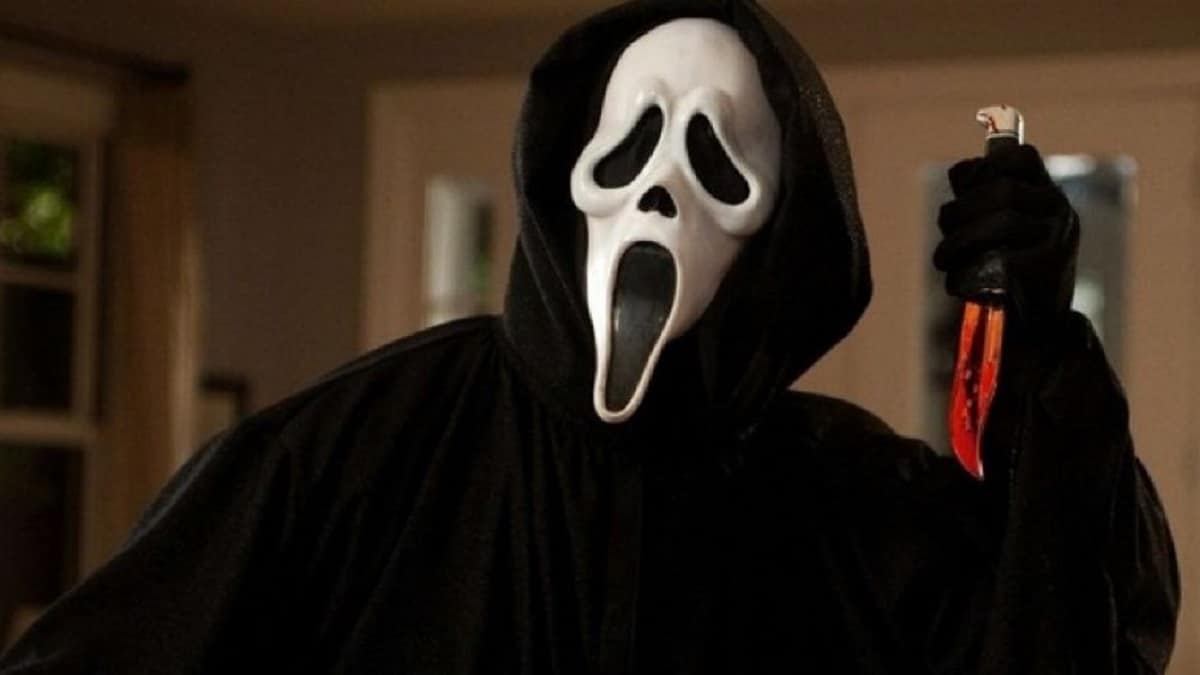





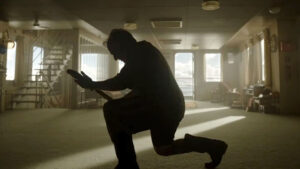


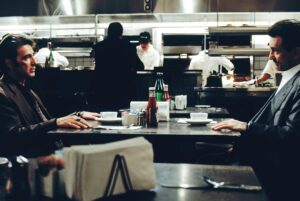


![[INTERVIEW] 'F1' Director Joseph Kosinski On The Upside Of Streaming & Sequels Starring Tom Cruise](https://www.bosshunting.com.au/wp-content/uploads/2025/12/INTERVIEW-F1-Director-Joseph-Kosinski-On-The-Upside-Of-Streaming-Sequels-Starring-Tom-Cruise-300x169.webp)
